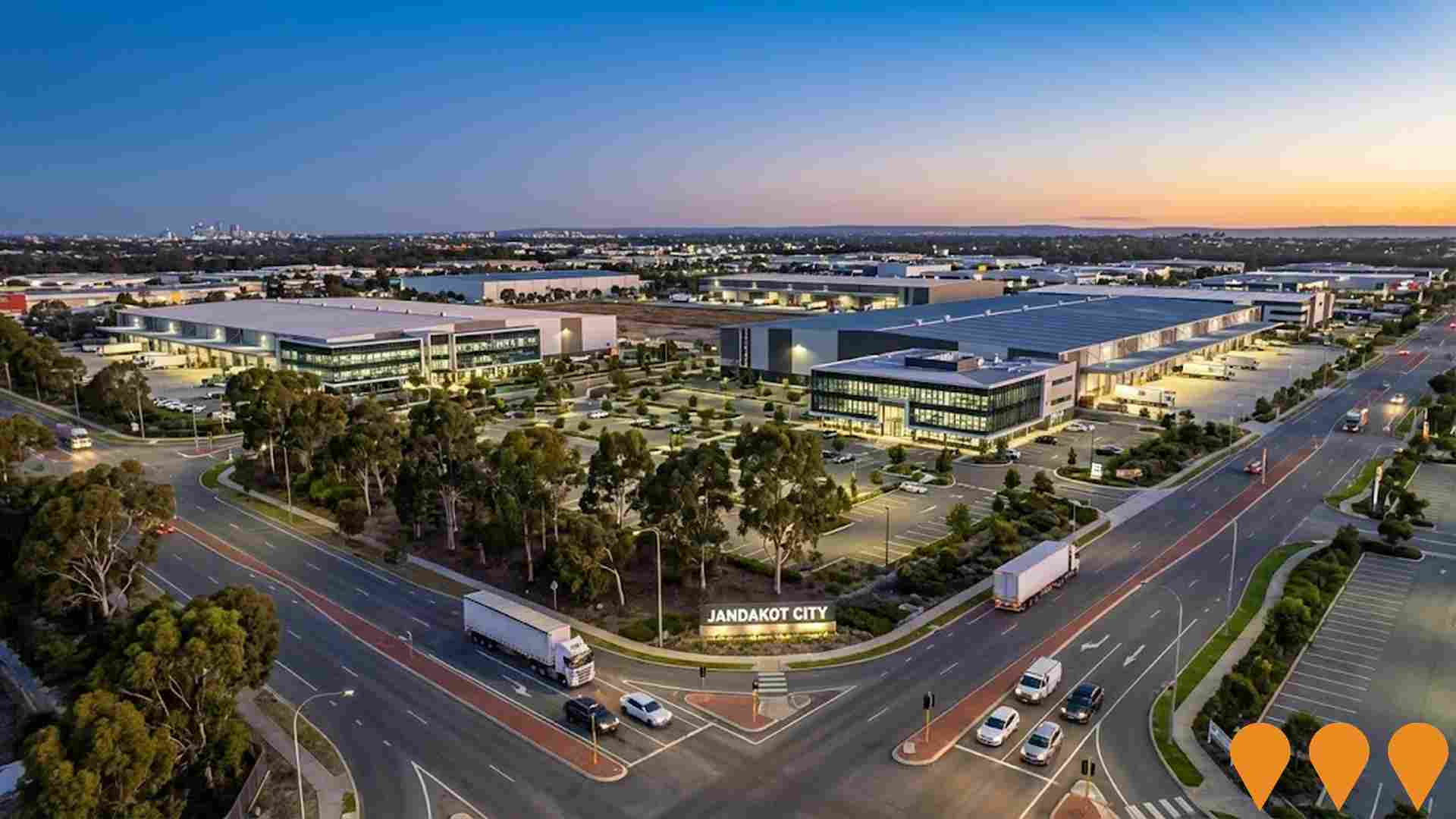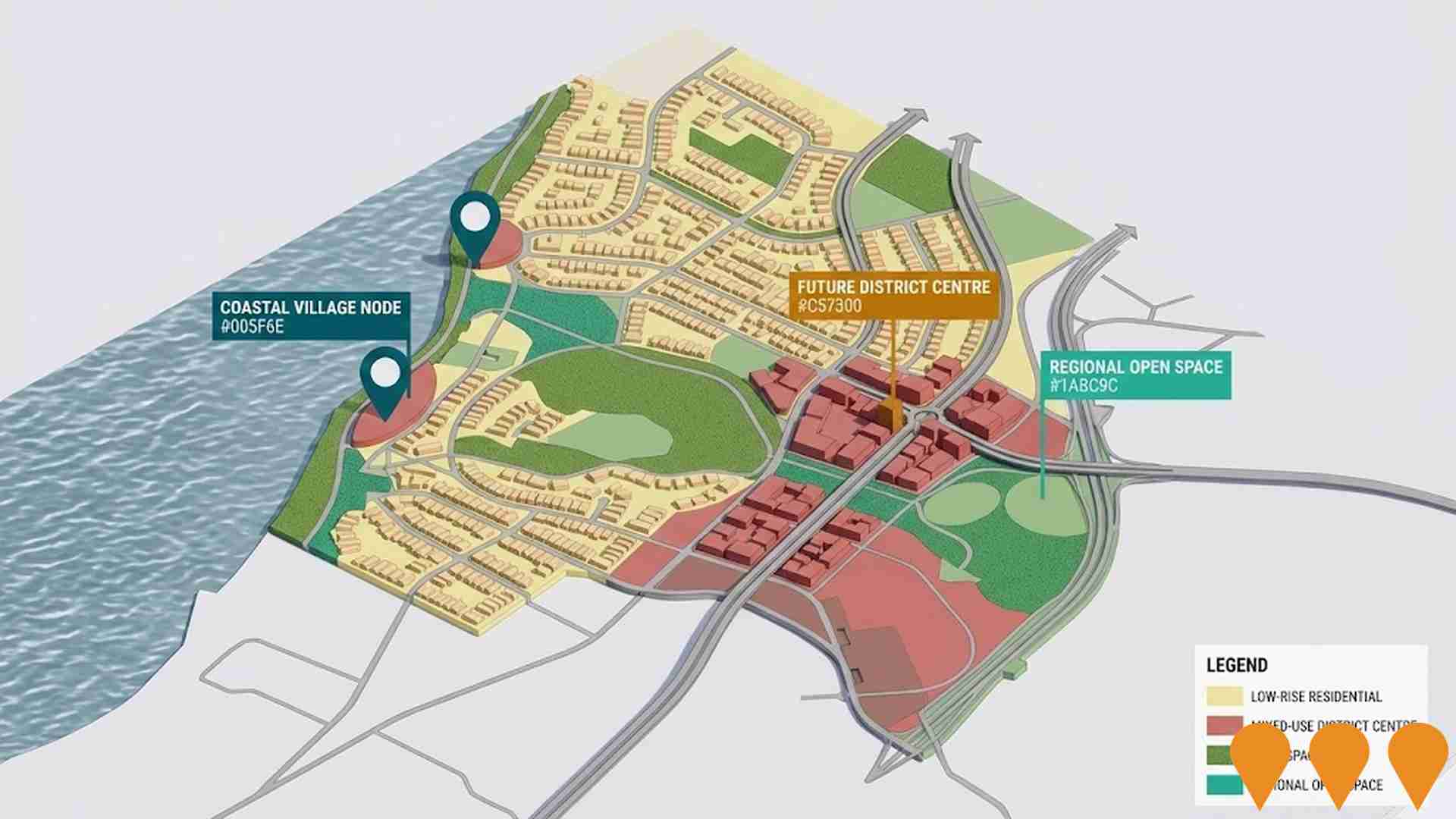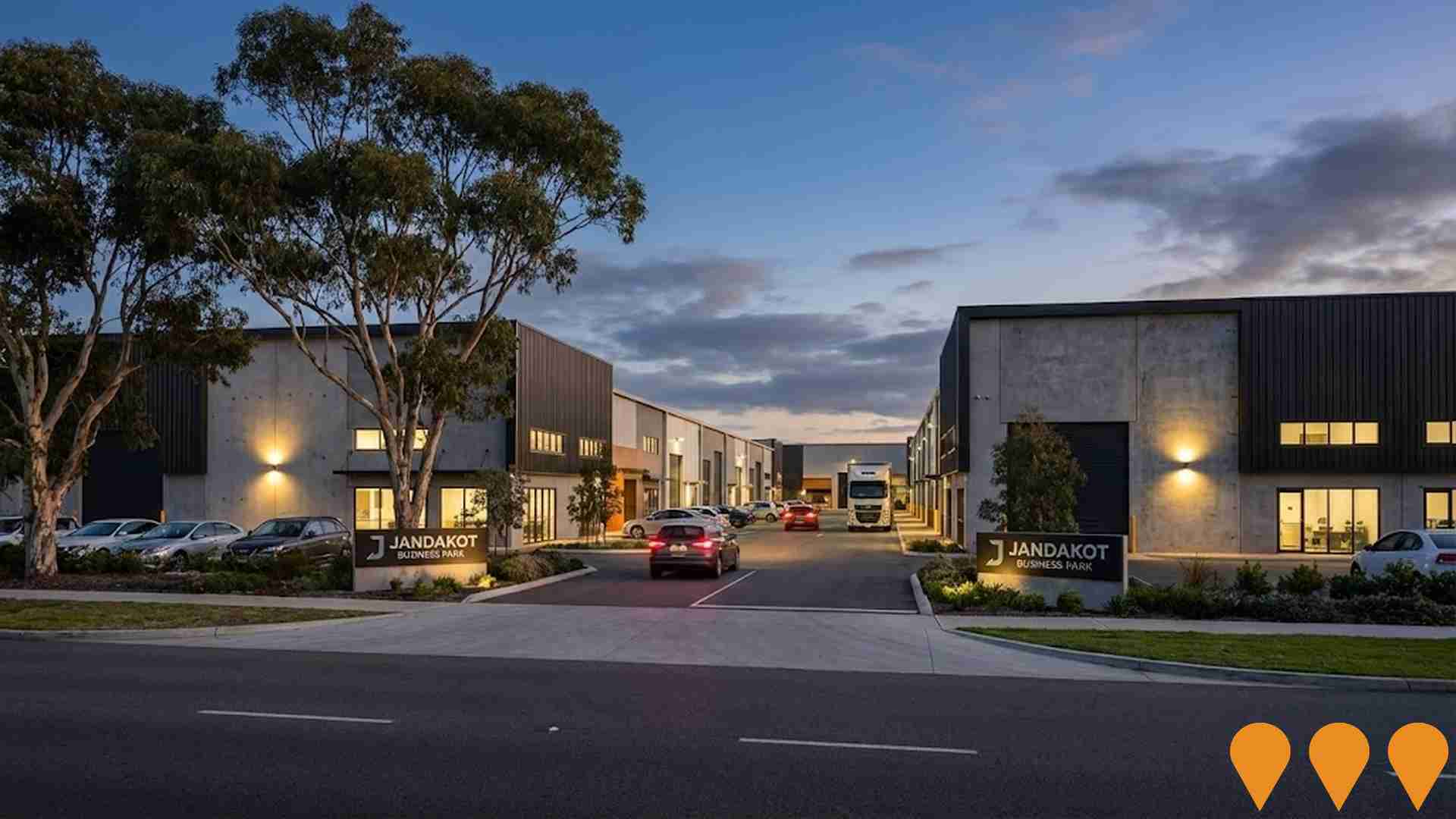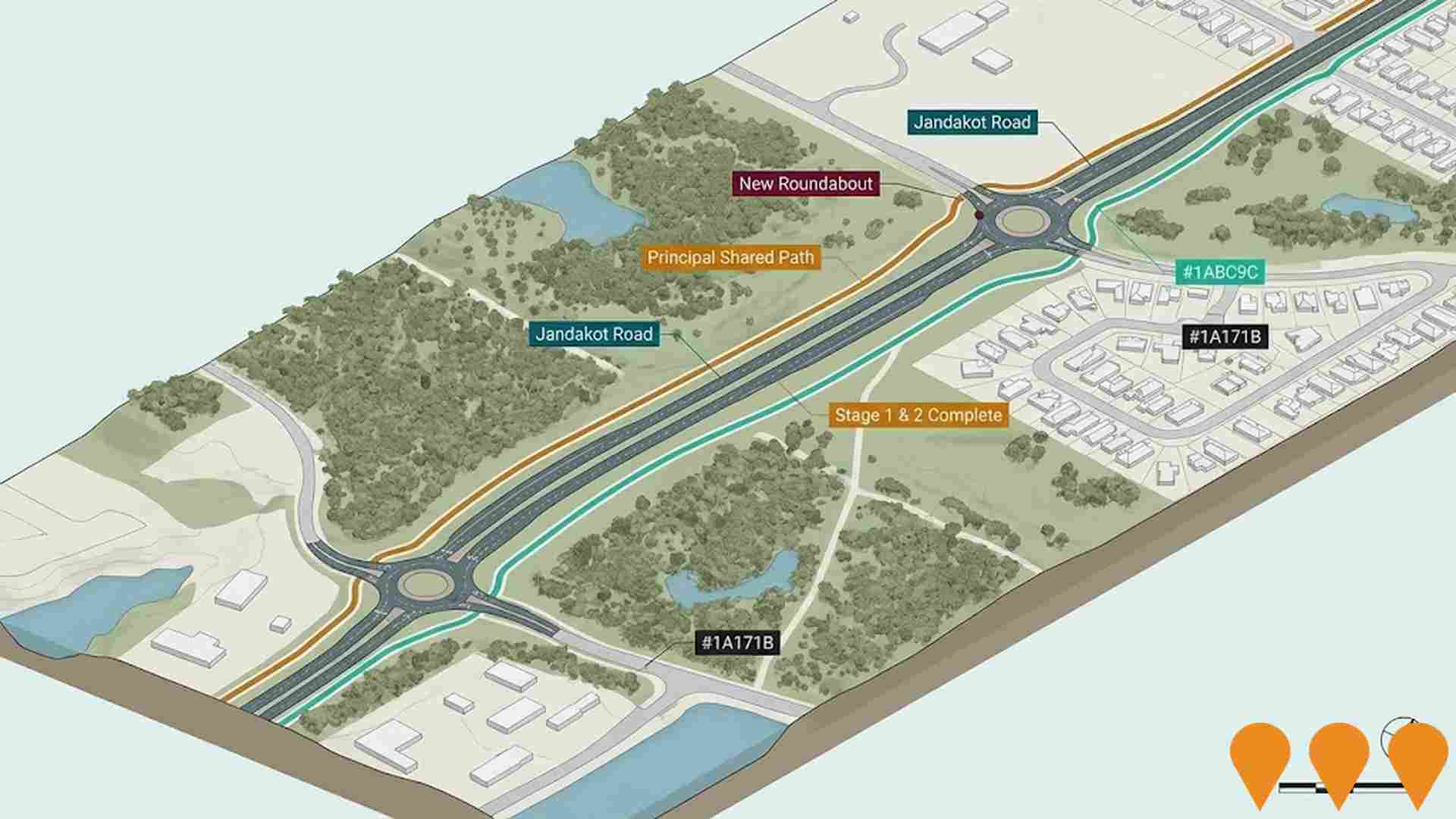Chart Color Schemes
est. as @ -- *
ABS ERP | -- people | --
2021 Census | -- people
Sales Activity
Curious about local property values? Filter the chart to assess the volume and appreciation (including resales) trends and regional comparisons, or scroll to the map below view this information at an individual property level.
Find a Recent Sale
Sales Detail
Population
Jandakot has shown very soft population growth performance across periods assessed by AreaSearch
Jandakot's population is approximately 3,039 as of August 2025. This figure represents an increase of 593 people, a rise of 24.2% since the 2021 Census which recorded a population of 2,446. This growth is inferred from the estimated resident population of 2,636 in June 2024 and an additional 162 validated new addresses since the Census date. The population density is 193 persons per square kilometer. Jandakot's growth rate exceeded the national average (8.6%) and the state average, making it a region leader in population growth. Overseas migration contributed approximately 74.1% of overall population gains during recent periods.
AreaSearch uses ABS/Geoscience Australia projections for each SA2 area, released in 2024 with a base year of 2022. For areas not covered by this data and to estimate growth post-2032, AreaSearch utilises growth rates by age cohort provided by the ABS in its latest Greater Capital Region projections (released in 2023, based on 2022 data). Future population projections indicate a median increase for statistical areas nationwide. Jandakot is expected to grow by 224 persons to reach 2041, with a projected reduction of 5.9% over the 17-year period.
Frequently Asked Questions - Population
Development
AreaSearch analysis of residential development drivers sees Jandakot recording a relatively average level of approval activity when compared to local markets analysed countrywide
Jandakot has seen approximately nine new homes approved annually. Over the past five financial years, from FY21 to FY25, around 45 homes were approved, with another 30 approved so far in FY26. On average, about 1.6 people moved to the area each year for every dwelling built during these years.
This balance between supply and demand supports stable market conditions. New properties are constructed at an average expected cost of $534,000, which is moderately above regional levels, indicating a focus on quality construction. In FY26, commercial approvals worth $37.2 million have been registered, suggesting robust local business investment. Compared to Greater Perth, Jandakot has significantly less development activity, with 64.0% below the regional average per person. This scarcity typically strengthens demand and prices for existing properties.
However, development activity has picked up in recent periods. Nationally, this activity is also lower, reflecting market maturity and possible development constraints. All new construction in Jandakot has been detached houses, maintaining its traditional low density character with a focus on family homes appealing to those seeking space. As of now, there are an estimated 1323 people per dwelling approval in the area, reflecting its quiet, low activity development environment. Given stable or declining population forecasts, Jandakot may experience less housing pressure, creating favourable conditions for buyers.
Frequently Asked Questions - Development
Infrastructure
Jandakot has moderate levels of nearby infrastructure activity, ranking in the 47thth percentile nationally
Infrastructure changes significantly influence an area's performance. AreaSearch identified 37 projects potentially impacting the area. Key projects include ASCEND Industrial Estate at Jandakot Airport, Cockburn Wetlands Precinct Redevelopment, Perth Surf Park, and Jandakot City. The following list details those most relevant.
Professional plan users can use the search below to filter and access additional projects.
INFRASTRUCTURE SEARCH
 Denotes AI-based impression for illustrative purposes only, not to be taken as definitive under any circumstances. Please follow links and conduct other investigations from the project's source for actual imagery. Developers and project owners wishing us to use original imagery please Contact Us and we will do so.
Denotes AI-based impression for illustrative purposes only, not to be taken as definitive under any circumstances. Please follow links and conduct other investigations from the project's source for actual imagery. Developers and project owners wishing us to use original imagery please Contact Us and we will do so.
Frequently Asked Questions - Infrastructure
ASCEND Industrial Estate at Jandakot Airport
A major 62-hectare industrial and logistics precinct located within Jandakot Airport, offering unrivalled connectivity to Roe Highway and Kwinana Freeway. The estate features flexible lot sizes, custom warehousing solutions, and 5-star Green Star rated facilities with significant solar and battery storage integration. Key tenants include Amazon, Kmart, Aldi, HelloFresh, and Marley Spoon.
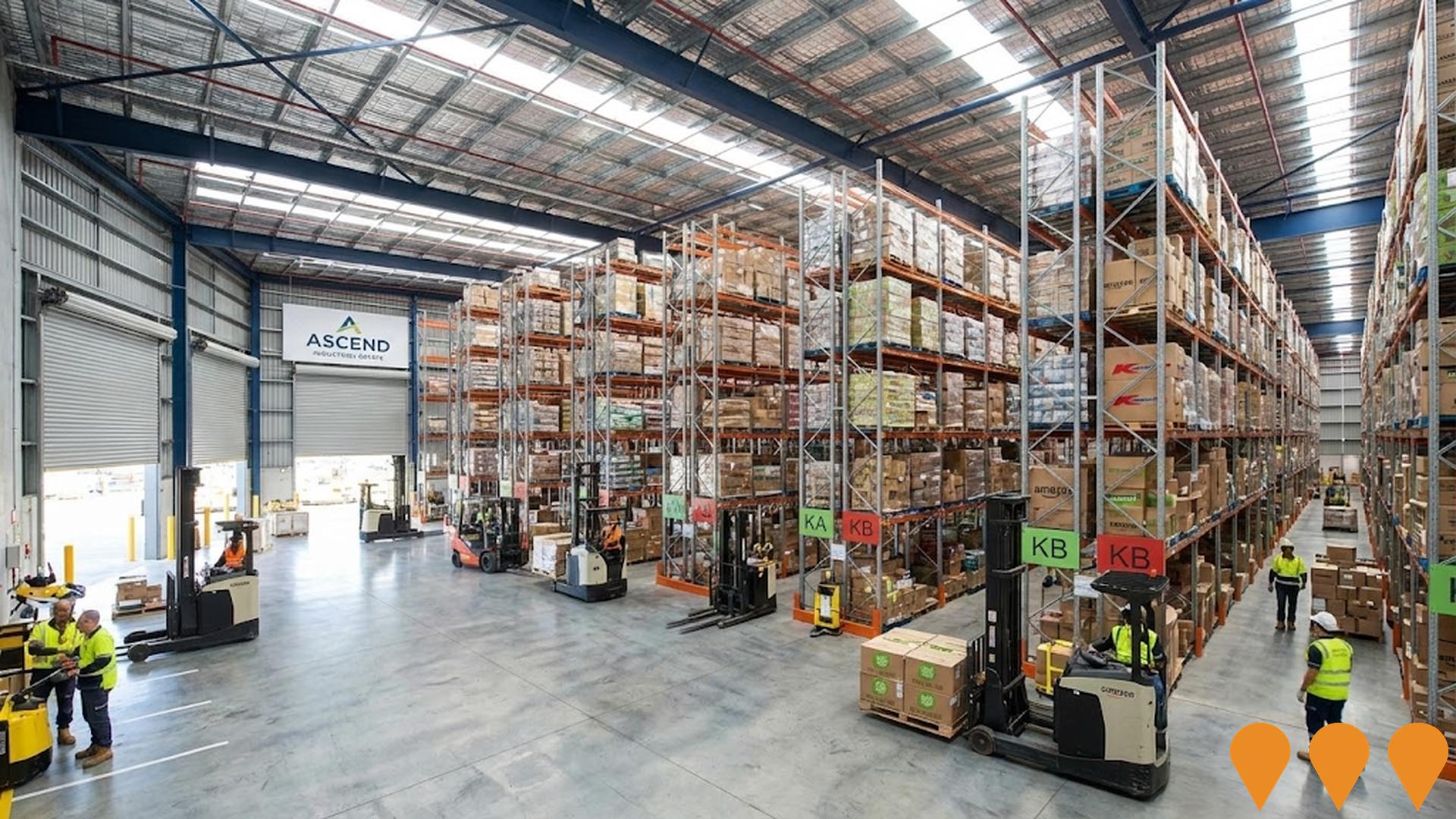
Treeby Primary School (Future)
Planned public primary school within Calleya Estate to serve the growing Treeby and surrounding community.

Cockburn Central Station Upgrade
Upgrade of Cockburn Central Station delivered under METRONET's Thornlie-Cockburn Link. Works included a new terminating platform (Platform 3) for the Thornlie-Cockburn Line, platform extension and canopy, expanded passenger facilities, bike storage and improved interchange to the Mandurah Line. The Thornlie-Cockburn Line opened on 9 June 2025, with trains terminating at Cockburn Central.
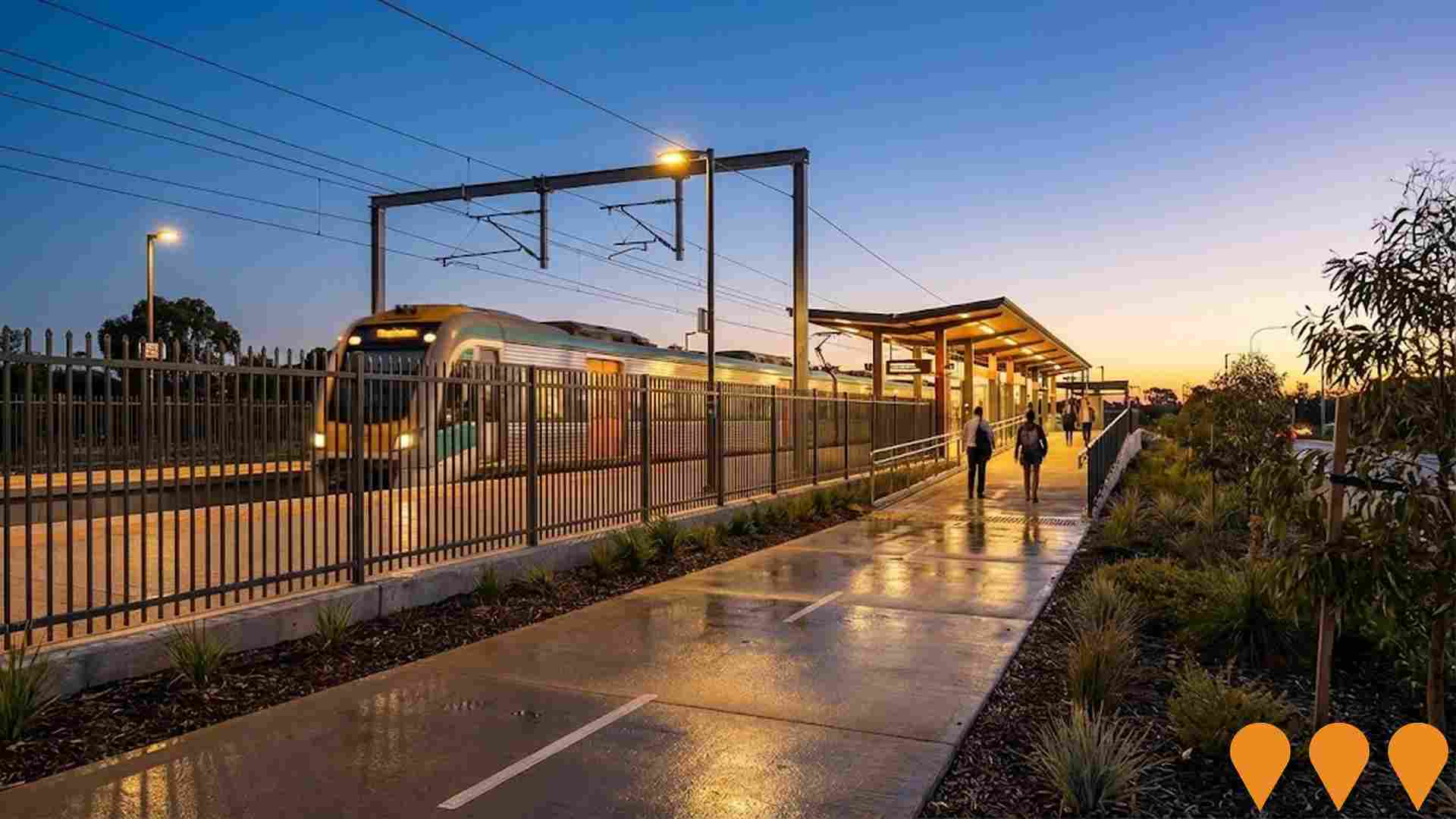
Treeby Village
Future neighbourhood retail centre within Calleya Estate including supermarket, specialty stores, medical centre, and childcare facility.
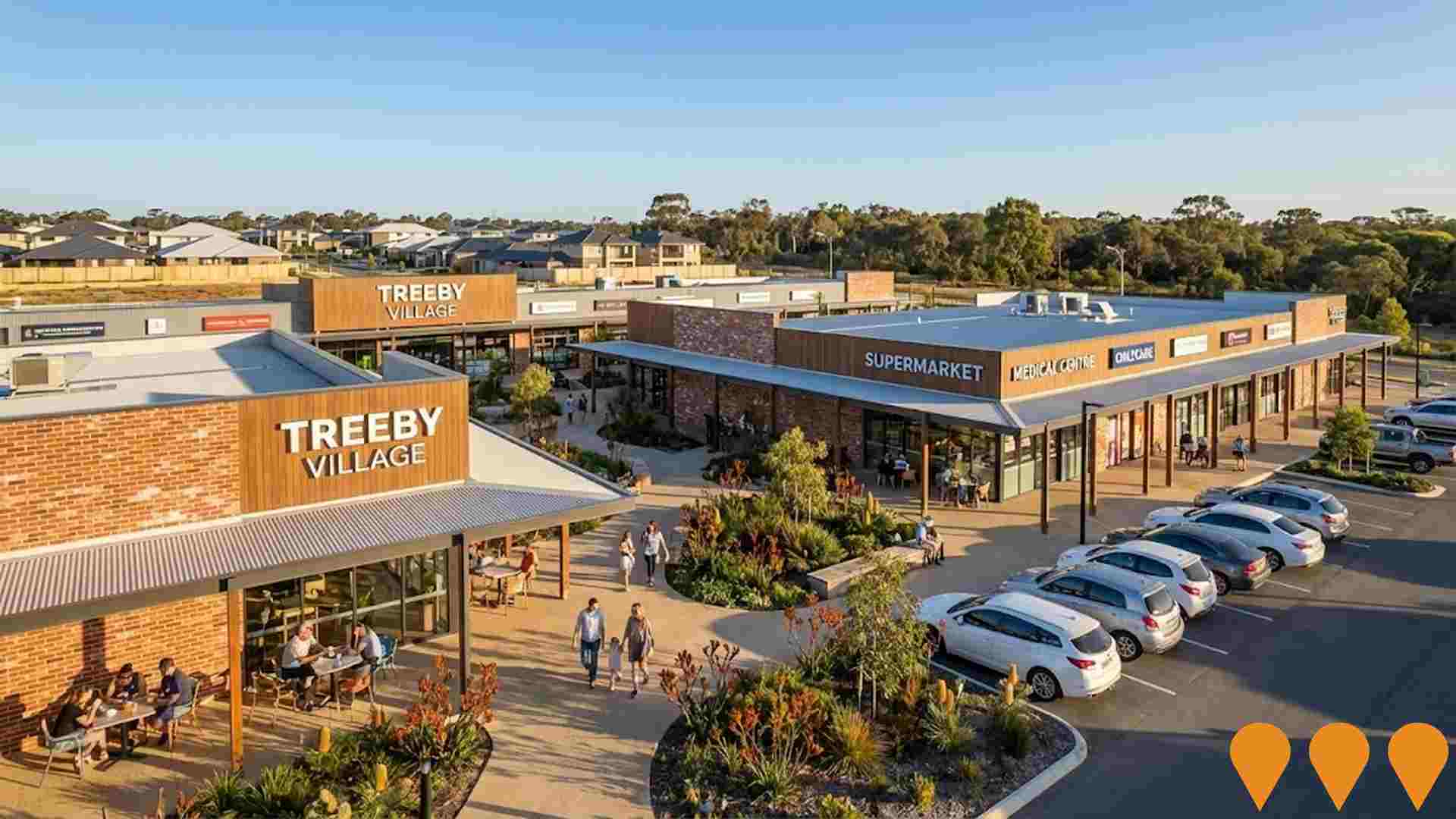
Stockland Bull Creek Shopping Centre Upgrade
Major upgrade and expansion of Bull Creek Shopping Centre (sold by Stockland to Silverleaf Investments in 2022 for $78 million). Includes new retail spaces, dining options, improved accessibility and modernized facilities.

Provence Estate
Premium residential estate in Treeby featuring large lots, landscaped parks, and proximity to future amenities within the growing Treeby community.

Prinsep Park Development
Redevelopment of Prinsep Park on the former Glen Iris Golf Course site to provide active open space and recreation infrastructure such as a skate park, pump track, and outdoor courts. This is identified as an infrastructure proposal in the City of Cockburn's adopted Community Infrastructure Plan 2024-2041, to address population growth from nearby residential expansions.

Cockburn Wetlands Precinct Redevelopment
Comprehensive redevelopment of the Cockburn Wetlands Education Centre and surrounding precinct to enhance environmental education, conservation programs and community engagement with the significant wetland ecosystem.
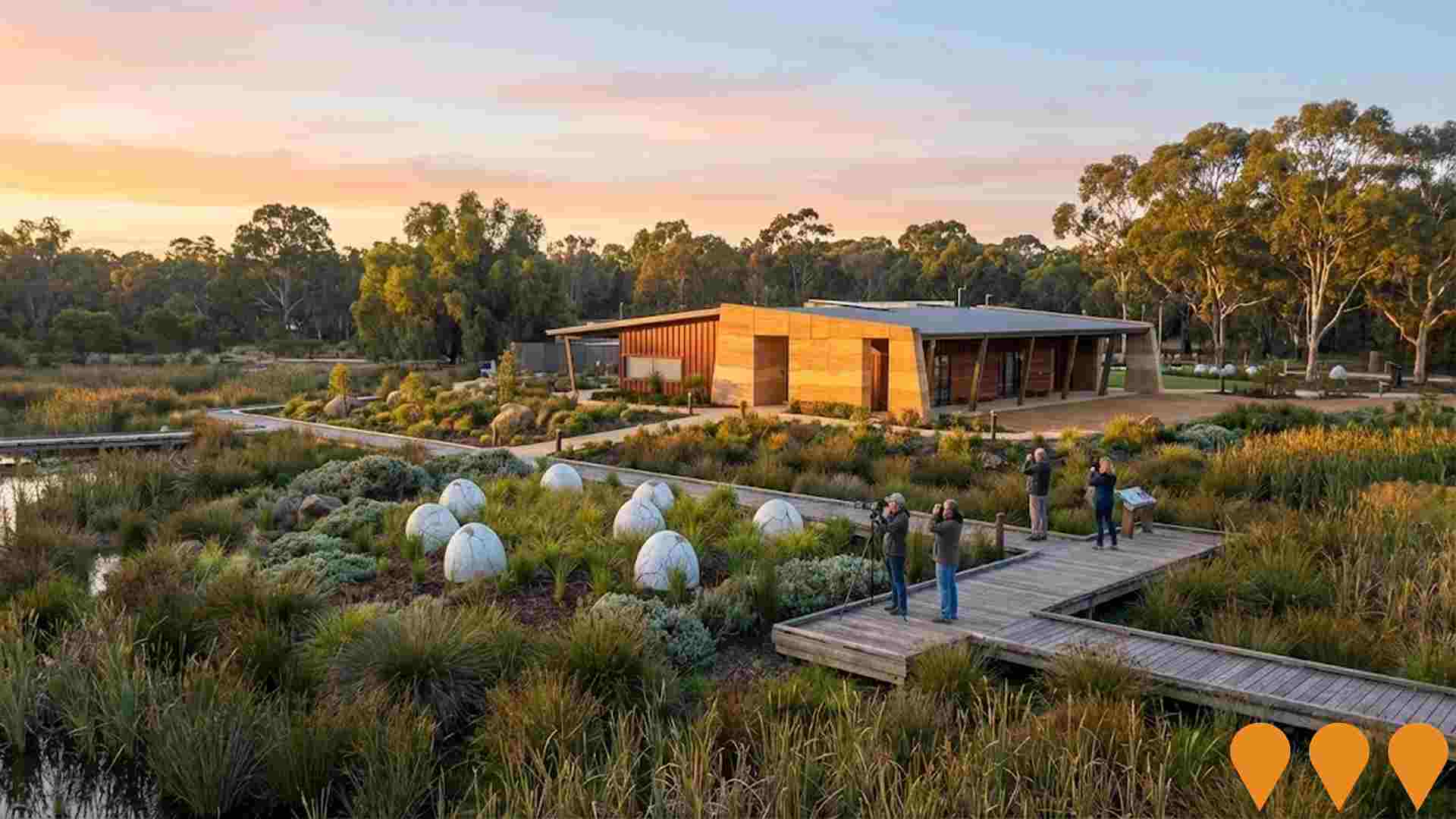
Employment
AreaSearch analysis of employment trends sees Jandakot performing better than 90% of local markets assessed across Australia
Jandakot has a skilled workforce with significant representation in essential services sectors. Its unemployment rate was 2.1% as of June 2024.
Over the past year, there was an estimated employment growth of 5.2%. As of June 2025, 1,686 residents are employed, with an unemployment rate of 1.7%, which is below Greater Perth's rate of 3.9%. Workforce participation in Jandakot is 68.7%, compared to Greater Perth's 65.2%. The leading employment industries among residents include health care & social assistance, education & training, and retail trade.
Notably, the concentration in education & training is high, with employment levels at 1.3 times the regional average. Conversely, accommodation & food services have limited presence, with 4.5% employment compared to the regional average of 6.8%. As per the Census, there are 3.7 workers for every resident in Jandakot, indicating that it functions as an employment hub hosting more jobs than residents and attracting workers from surrounding areas. Between June 2024 and June 2025, employment increased by 5.2% while labour force increased by 5.8%, resulting in a rise of 0.6 percentage points in the unemployment rate. In comparison, Greater Perth saw employment grow by 3.7%, labour force expand by 3.8%, and unemployment rise by 0.1 percentage points. Jobs and Skills Australia's national employment forecasts from May 2025 project that national employment will expand by 6.6% over five years and 13.7% over ten years. Applying these projections to Jandakot's employment mix suggests local growth of approximately 6.3% over five years and 13.4% over ten years, based on a simple weighting extrapolation for illustrative purposes.
Frequently Asked Questions - Employment
Income
Income metrics indicate excellent economic conditions, with the area achieving higher performance than 75% of national locations assessed by AreaSearch
Jandakot's median income among taxpayers was $62,060 in financial year 2022. The average income stood at $74,075 during the same period. These figures are higher than those for Greater Perth, which were $58,380 and $78,020 respectively. Based on Wage Price Index growth of 14.2% since financial year 2022, current estimates suggest the median income would be approximately $70,873 and the average income would be around $84,594 by September 2025. According to the 2021 Census, household, family, and personal incomes in Jandakot ranked highly nationally, between the 69th and 84th percentiles. Income analysis showed that 32.9% of the population (999 individuals) fell within the $1,500 - 2,999 income range, consistent with broader trends across the region where 32.0% were in the same category. Notably, 37.2% earned above $3,000 weekly, indicating prosperity and robust local economic activity. After housing costs, residents retained 87.7% of their income, reflecting strong purchasing power. The area's SEIFA income ranking placed it in the 8th decile during this period.
Frequently Asked Questions - Income
Housing
Jandakot is characterized by a predominantly suburban housing profile, with above-average rates of outright home ownership
In Jandakot, as assessed in the latest Census, 98.6% of dwellings were houses with the remaining 1.5% comprising semi-detached homes, apartments and other types. This contrasted with Perth metropolitan area's 81.2% houses and 18.8% other dwellings. Home ownership in Jandakot stood at 41.3%, with mortgaged properties at 45.9% and rented ones at 12.8%. The median monthly mortgage repayment was $2,167, higher than Perth metro's average of $1,950. Median weekly rent in Jandakot was $443, compared to Perth metro's $370. Nationally, Jandakot's mortgage repayments were significantly higher at $2,167 versus Australia's average of $1,863, while rents were substantially above the national figure of $375.
Frequently Asked Questions - Housing
Household Composition
Jandakot features high concentrations of family households, with a higher-than-average median household size
Family households account for 85.3% of all households, including 41.7% couples with children, 32.9% couples without children, and 8.9% single parent families. Non-family households make up 14.7%, with lone person households at 14.1% and group households comprising 1.3%. The median household size is 2.8 people, larger than the Greater Perth average of 2.6.
Frequently Asked Questions - Households
Local Schools & Education
Jandakot performs slightly above the national average for education, showing competitive qualification levels and steady academic outcomes
University qualification levels in Jandakot stand at 28.0%, slightly below the Australian average of 30.4%. Bachelor degrees are the most common at 19.1%, followed by postgraduate qualifications at 5.4% and graduate diplomas at 3.5%. Vocational credentials are prominent, with 36.7% of residents aged 15+ holding them, including advanced diplomas (12.9%) and certificates (23.8%).
Educational participation is high, with 25.8% currently enrolled in formal education: 8.7% in secondary, 7.9% in primary, and 5.8% in tertiary. Alta-1 College - Cooper Road Campus serves Jandakot but has no enrolled students as of the given date. Secondary students primarily attend one school within Jandakot, while those in primary typically go to schools in nearby areas due to no local primary schools.
Frequently Asked Questions - Education
Schools Detail
Nearby Services & Amenities
Transport
Transport servicing is good compared to other areas nationally based on assessment of service frequency, route connectivity and accessibility
The analysis of public transportation in Jandakot shows that there are currently 14 operational transport stops. These stops offer a variety of bus services. Six different routes serve these stops, collectively transporting 1048 passengers weekly.
The accessibility to public transport is considered moderate, with residents typically living about 490 meters away from the nearest stop. On average, each route makes 149 trips daily, which amounts to approximately 74 weekly trips per individual stop.
Frequently Asked Questions - Transport
Transport Stops Detail
Health
Jandakot's residents are extremely healthy with both young and old age cohorts seeing low prevalence of common health conditions
Analysis of health metrics shows strong performance throughout Jandakot.
Both young and old age cohorts exhibit low prevalence of common health conditions. The rate of private health cover is very high at approximately 56% of the total population (~1,717 people). The most common medical conditions in the area are arthritis and mental health issues, impacting 6.7% and 6.2% of residents respectively. A total of 71.7% of residents declare themselves completely clear of medical ailments, compared to 72.9% across Greater Perth. As of 30 June 20XX, the area has 20.8% of residents aged 65 and over (631 people), which is higher than the 14.8% in Greater Perth. Health outcomes among seniors are particularly strong, performing even better than the general population in health metrics.
Frequently Asked Questions - Health
Cultural Diversity
Jandakot was found to be more culturally diverse than the vast majority of local markets in Australia, upon assessment of a range of language and cultural background related metrics
Jandakot's population showed higher cultural diversity compared to most local markets, with 15.7% speaking a language other than English at home and 37.5% born overseas. Christianity was the predominant religion in Jandakot, accounting for 57.7%, which is higher than Greater Perth's 48.5%. The top three ancestry groups were English (28.7%), Australian (21.7%), and Other (9.7%).
Notably, South African ancestry was overrepresented at 2.8% in Jandakot compared to the regional average of 1.1%, as were Polish (1.1% vs 0.7%) and Italian (5.2% vs 6.6%) ancestries.
Frequently Asked Questions - Diversity
Age
Jandakot hosts an older demographic, ranking in the top quartile nationwide
Jandakot's median age in 2021 was 44 years, higher than Greater Perth's figure of 37 years and significantly above the national norm of 38 years. The 65-74 age group constituted 12.1% of Jandakot's population compared to Greater Perth, while the 35-44 cohort made up 12.3%. Post-2021 Census, younger residents lowered the median age by 1.3 years to 44 years. Specifically, the 25-34 age group grew from 10.3% to 12.7%, and the 75-84 cohort increased from 5.1% to 6.9%. Conversely, the 55-64 cohort decreased from 15.5% to 12.8%, and the 45-54 group fell from 14.7% to 12.7%. By 2041, Jandakot's age composition is projected to change notably. The 85+ cohort is expected to grow by 126%, adding 68 residents to reach 123. The aging population trend is evident, with those aged 65 and above comprising all of the projected growth. In contrast, both the 0-4 and 5-14 age groups are forecasted to decrease in numbers.



